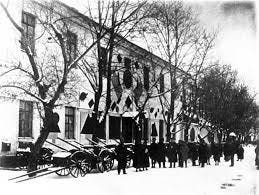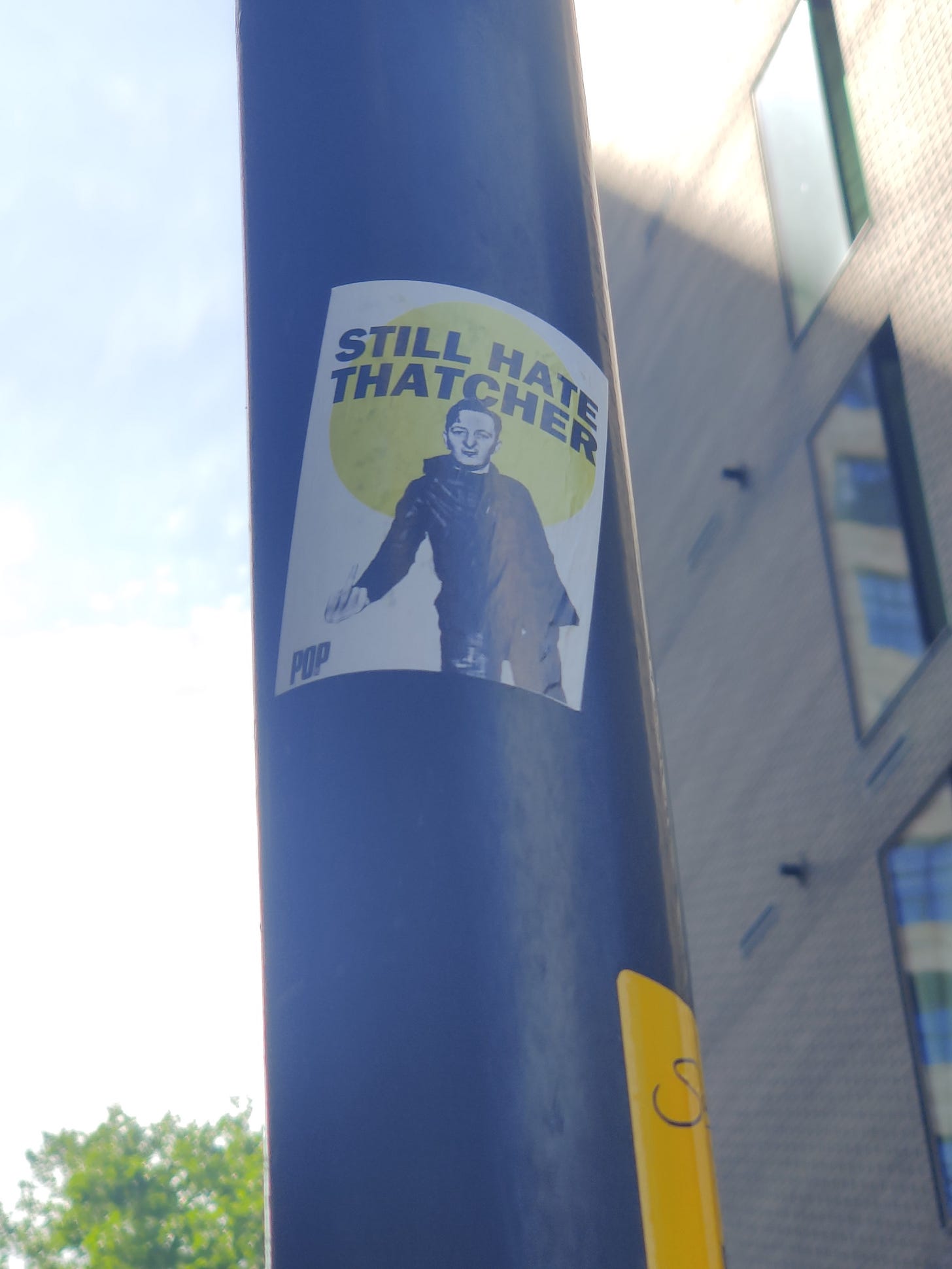Three Cheers for the Graff!
A Love Letter to European Street Art
When I was in college, I spent a lot of time photographing graffiti and street art around Manhattan and Brooklyn, especially around my unpaid internship at the Drawing Center in SoHo. In 2018, I published a comic for Jewish Currents about the small Jewish town of Vitebsk in the former USSR, which was known for being an enormous art center in the 1920s— home to the schools of Marc Chagall as well as El Lissitzky and Kazimir Malevich. I loved Vitebsk because of a photograph I saw of the town covered in painted geometric shapes:
This kicked off a whole string of thoughts about the need for more public and interactive art-making, and I ended up gently criticizing the Jewish Museum in NY for an exhibit on Vitebsk that prevented interactive engagement:
I haven’t ever kicked my love of all-over-city-scribbles, and Europe has graffiti and street art of all sorts in droves— far more so than the US, which mostly replaces public art with advertisements. Inspired by my travels so far, I want to share the beautiful and beautifully weird graffiti and public art I’ve seen on the Antifascist Euro Tour:
Tour Stop 1: The Netherlands
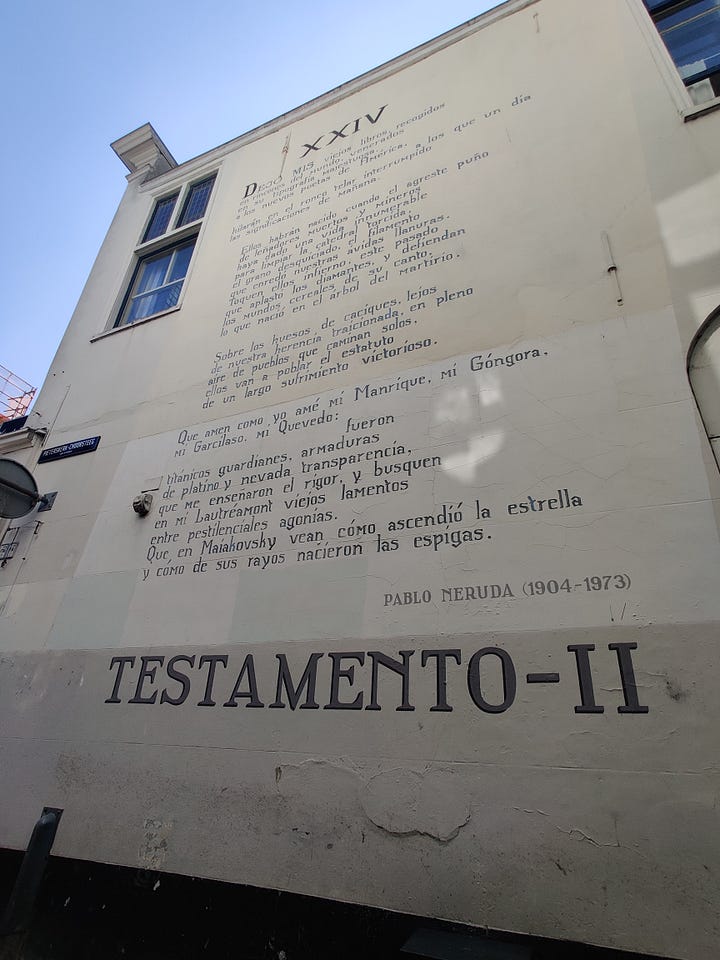
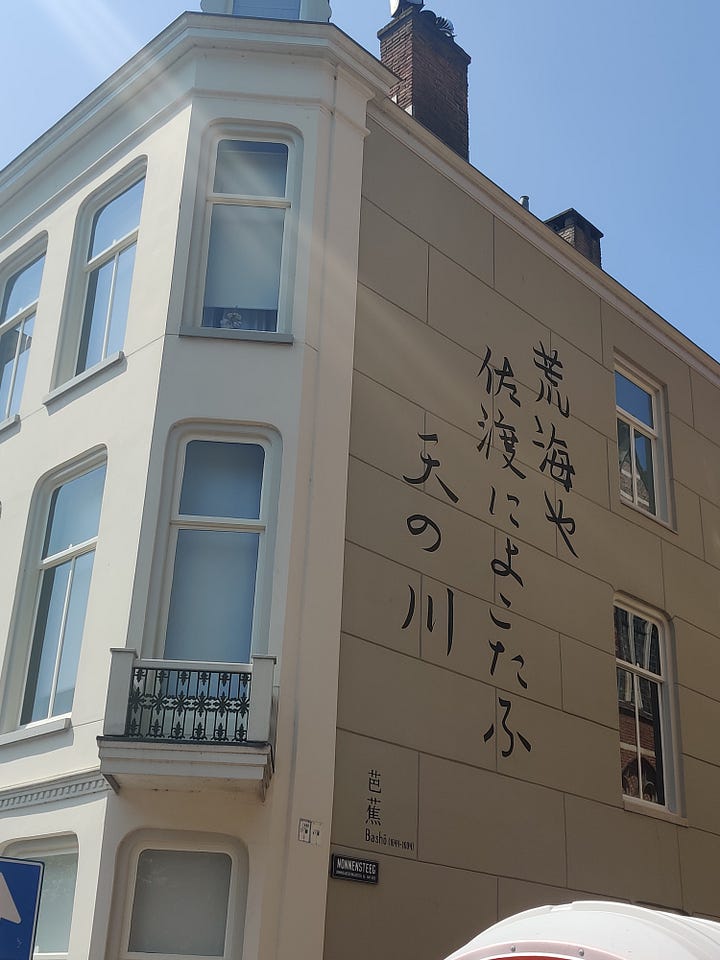

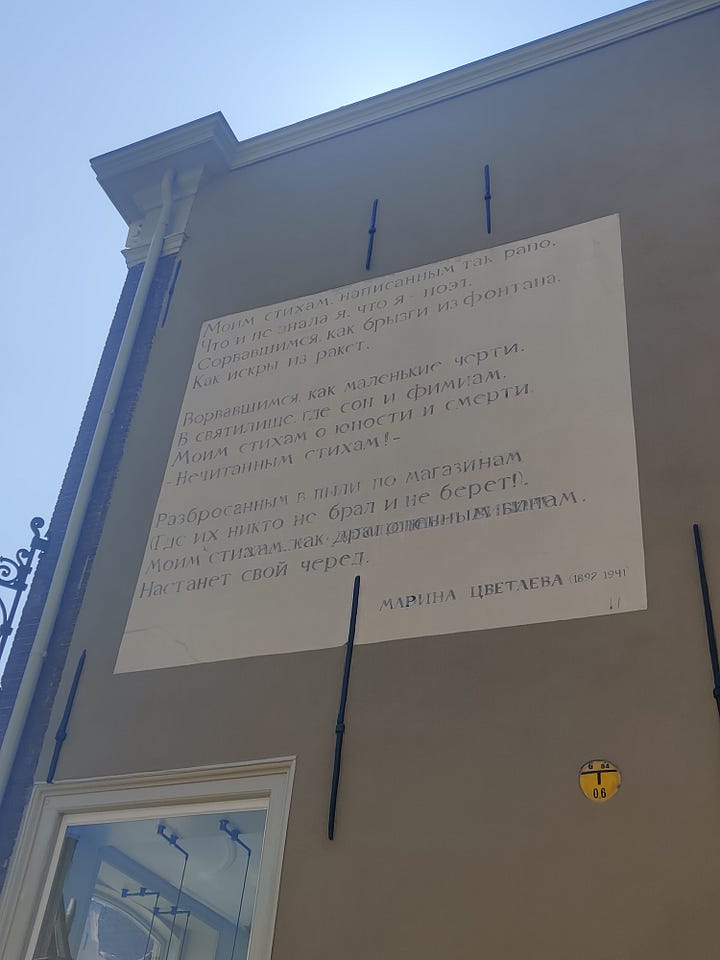
I love how Leiden, especially around the university (the oldest in the Netherlands!), has these enormous poetry murals. I especially love that they aren’t translated, for some reason!
Leiden didn’t have a ton of unofficial graffiti compared to other cities but I was very amused by this one!
Tour Stop 2: England
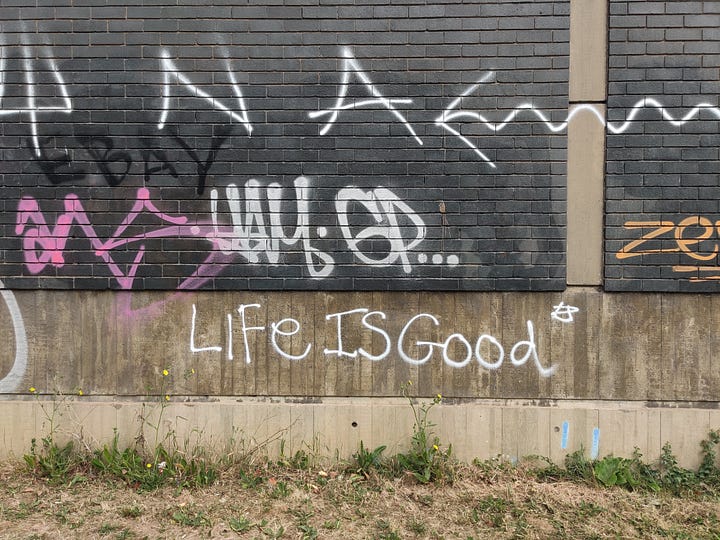
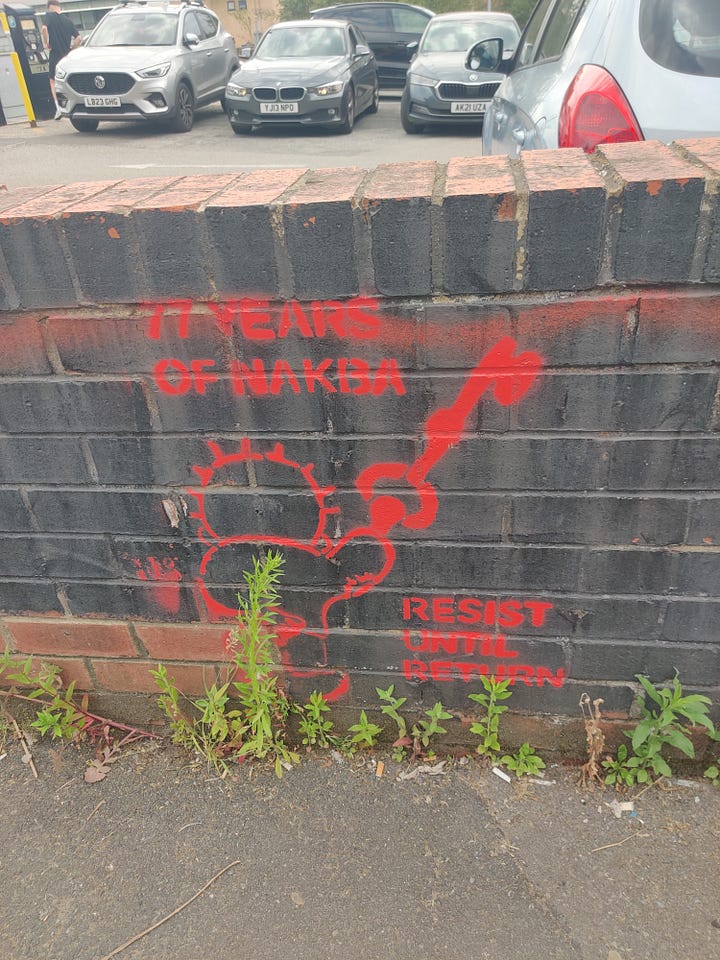
Just a few snaps of graffiti from around Sheffield DocFest.


I was extremely impressed by the street art, stickers, wheatpaste etc around the northern district in Manchester! An extremely cool city to which I hope to return!
No idea who this man is but I, too, still hate Thatcher. Thanks London sticker-er!
Tour Stop 3: Belgium
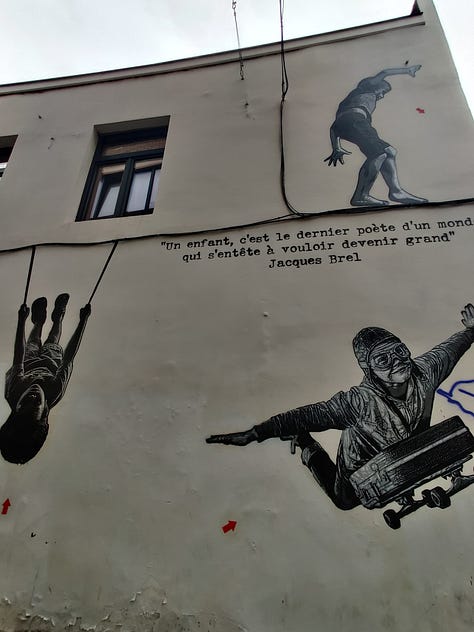
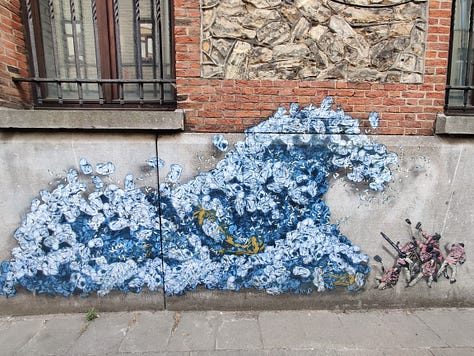

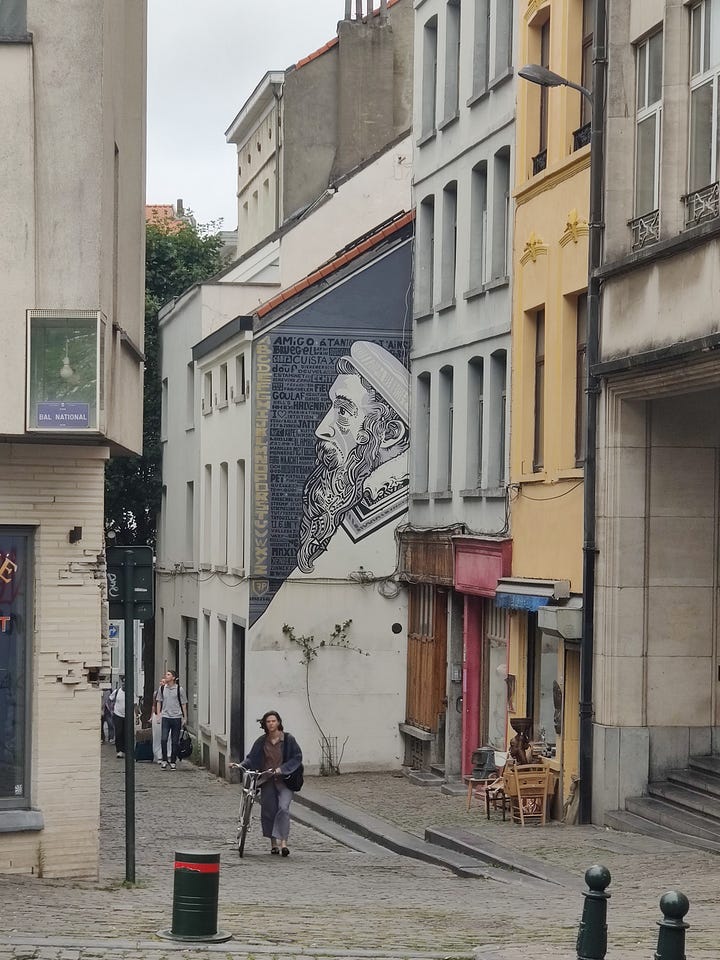
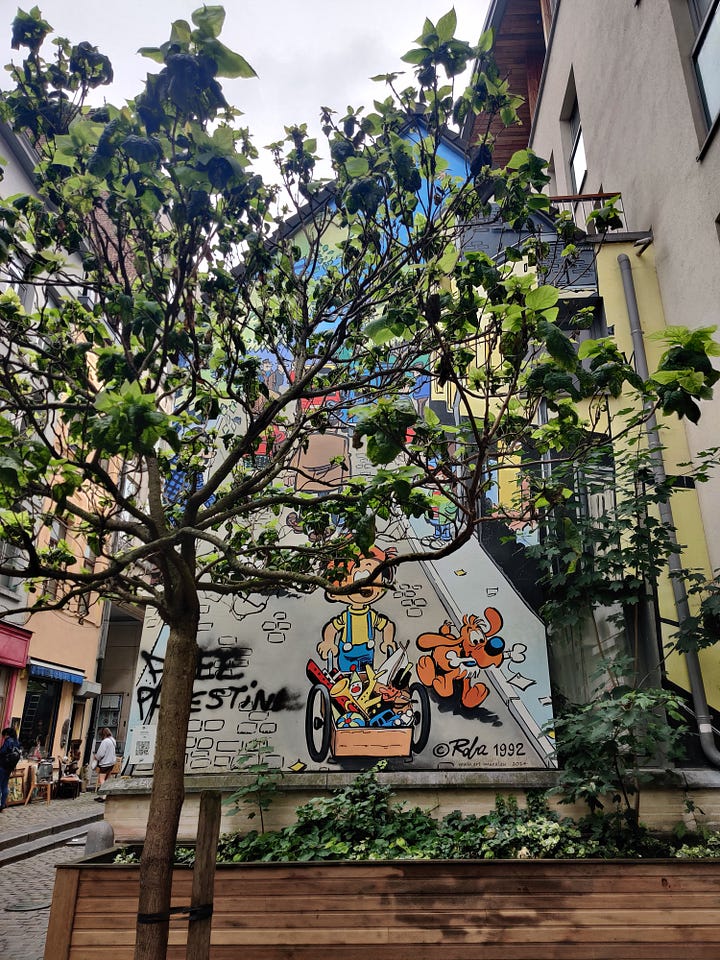
Belgium, and especially Brussels, had some of the loveliest street art and graffiti that I’ve ever seen in my entire life. A lot of it, especially near the central district, highlighted the important history of Belgian bandes dessinées (BDs). Of course I also had to stop by the address of Chantal Ackerman’s Jeanne Dielman, 23 quai du Commerce, 1080 Bruxelles, nearby which is a beautiful fresco of the protagonist of the film. I also especially loved the Jacques Brel quote, which translates into something like: “the child is the last poet of the world who intends to become Great.”
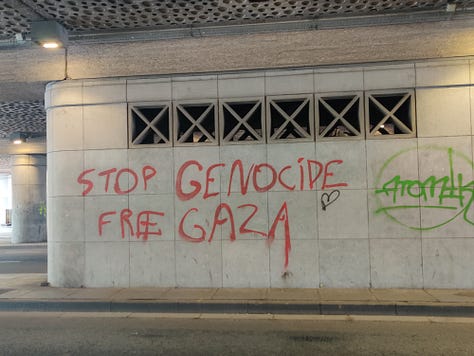
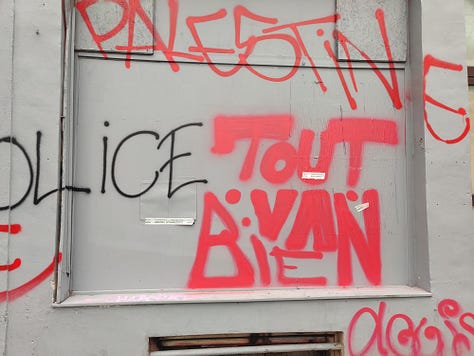
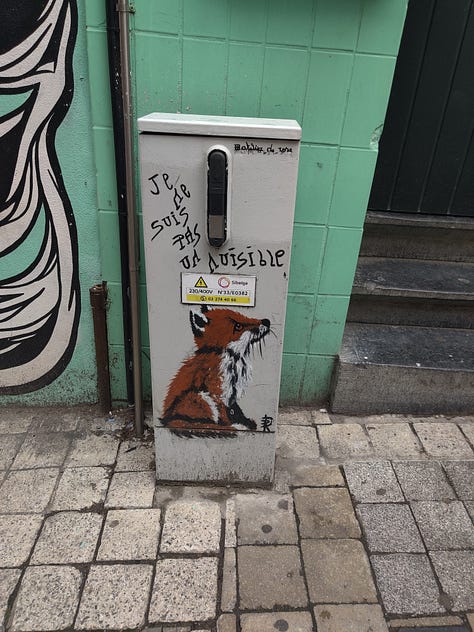
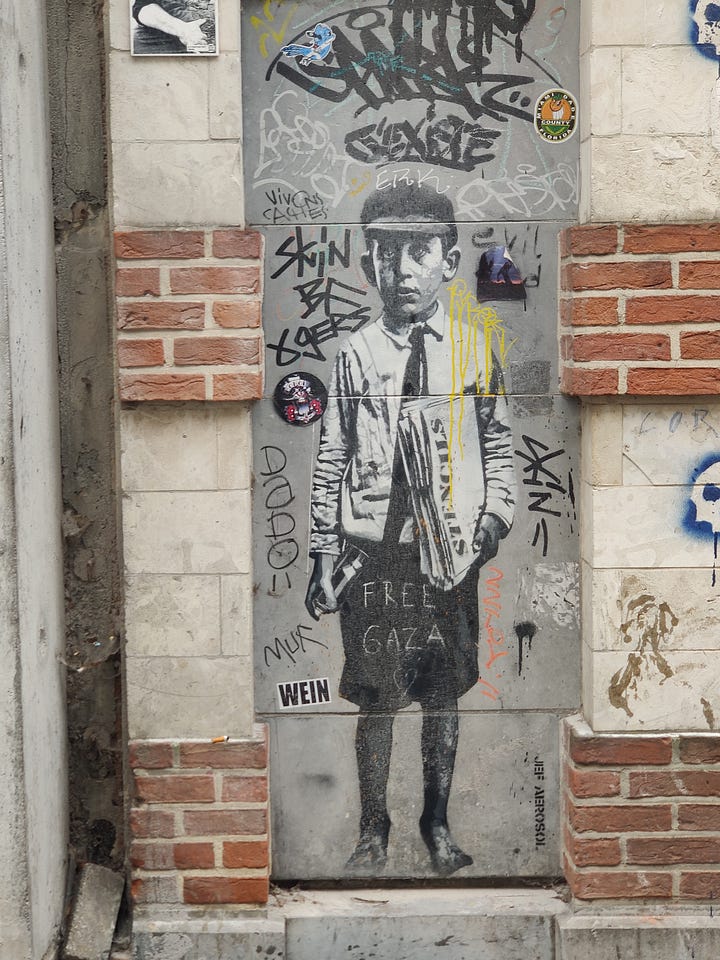

Also lots of less-official graffiti throughout Brussels— I saw that fox in several iterations around town— and I was especially excited to see THE cat from the first Chris Marker film I’ve ever seen, The Case of the Grinning Cat!
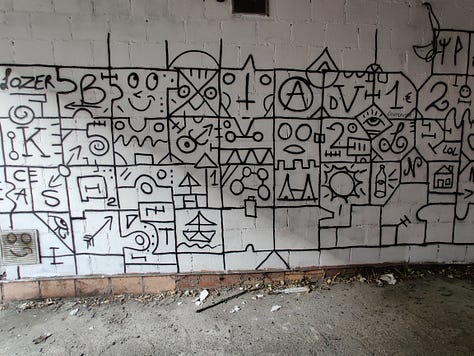
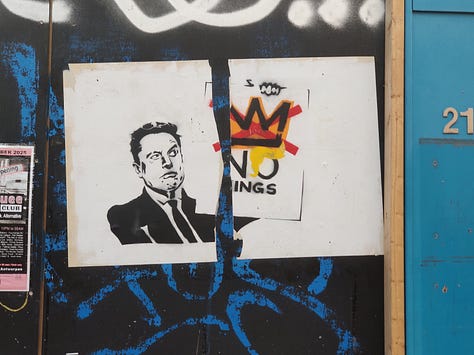

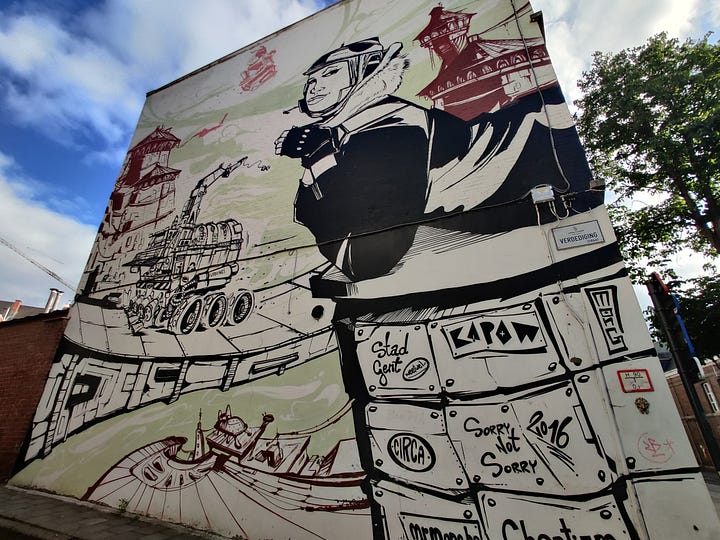
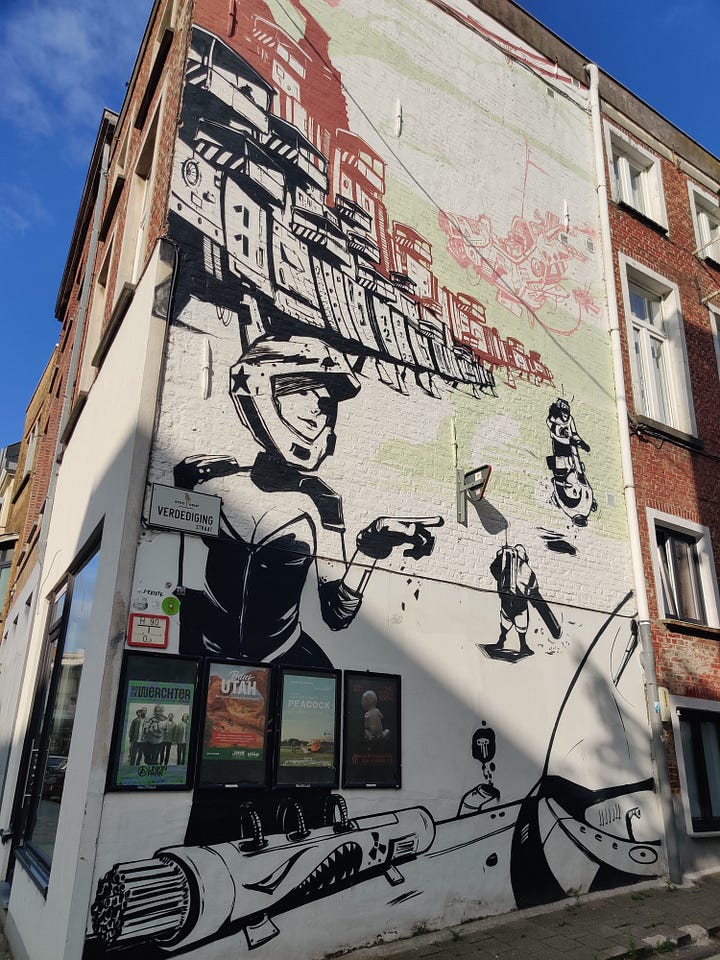
Ghent and Antwerp were beautiful cities that didn’t have quite as much visible public art as Brussels, but still had plenty of beautiful (and sometimes absurd and silly) imagery.
Tour Stop 4: Germany

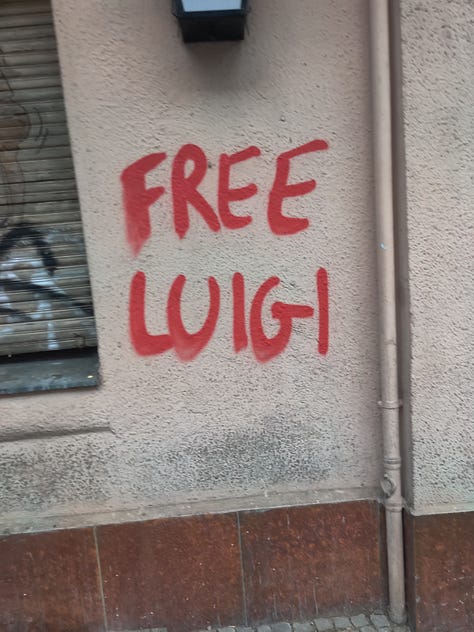


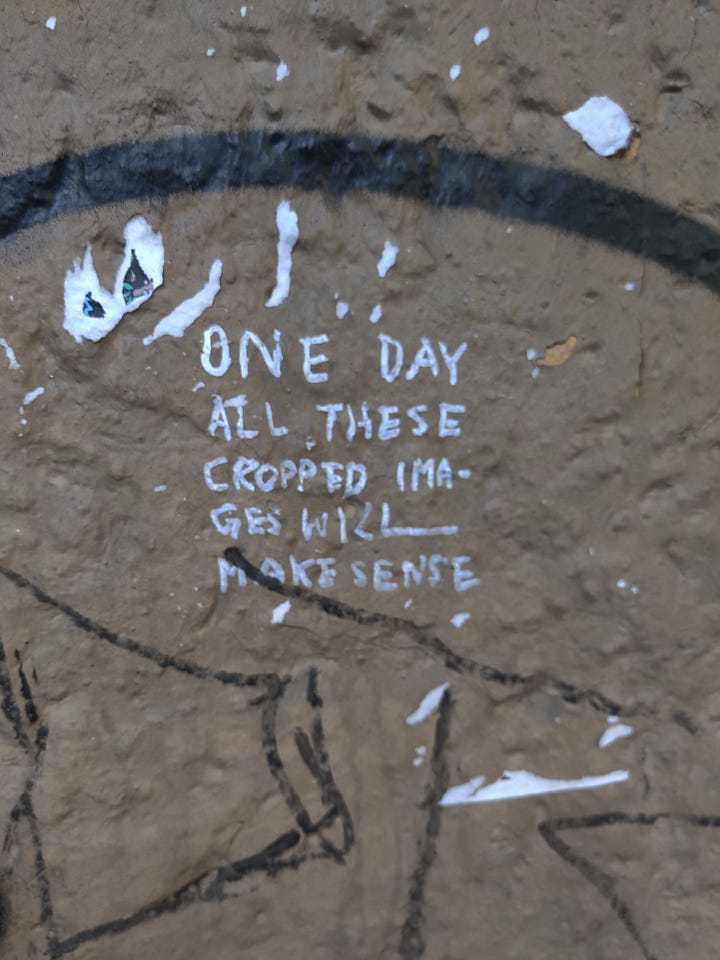
These random photos of Berlin graffiti truly do not do the scribbled nature of the city justice. It’s hard to choose what to photograph because graffiti is everywhere in Berlin, and I love being ensconced in a city that feels constantly evolving and participatory, as if every street corner was its own evolving autonomous zone. I find it inspiring and heartening to see discourse on every wall in a city that has seen so much terror, and continues to be the site of so much censorship and oppression.
More next week, when I’ll return with a longer (more word- and less image-heavy) reflection on the drive to travel. And please say hi you’re in Berlin on the 8th or Potsdam on the 10th!
From Europe with love, xo-J



